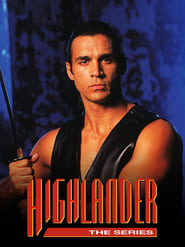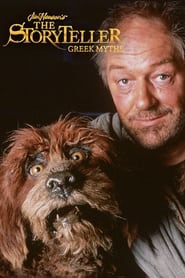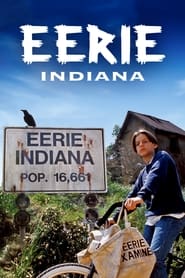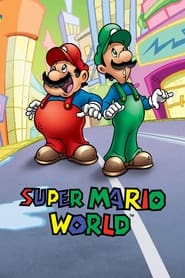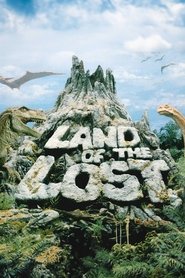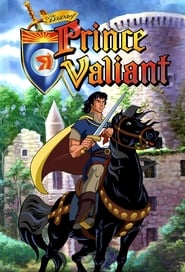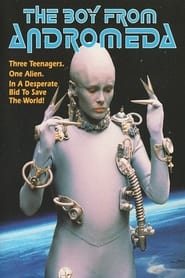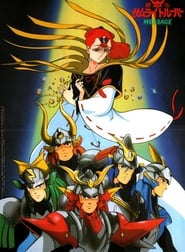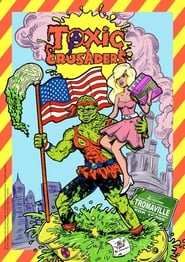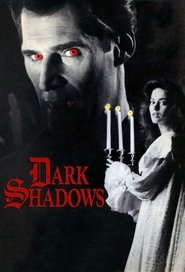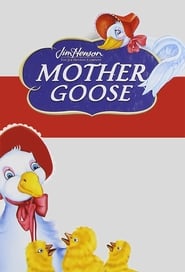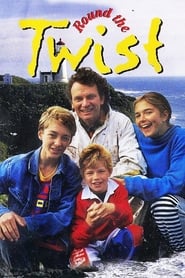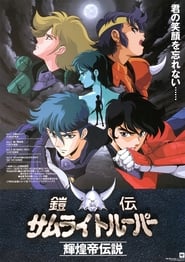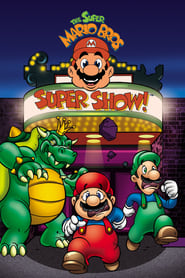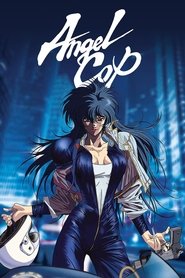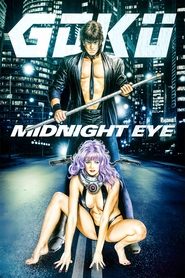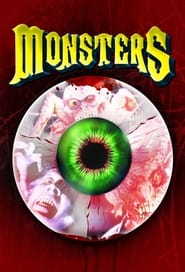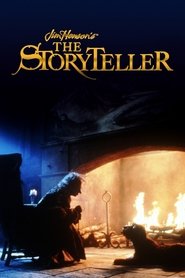New Sci Fi Fantasy TV Series on Amazon Prime Video - Page 18
-
Highlander: The Series
1992
star 7.4Duncan MacLeod cannot die -- he is a 400-year-old immortal, who has seen his share of humanity's history. Still, he risks his life in battle against other immortals and tries to save people from harm. -
The Odyssey
1992
The Odyssey
1992
star 7.1The Odyssey is a Canadian-produced half-hour adventure-fantasy television series for children, originally broadcast 1992-94 on CBC Television. It starred Illya Woloshyn as Jay Ziegler, Ashleigh Aston Moore as Donna/Alpha, Tony Sampson as Keith/Flash, Andrea Nemeth as Medea/Sierra Jones, Mark Hildreth as Finger, Ryan Reynolds as Macro, Janet Hodgkinson as Val Ziegler, and Devon Sawa as Yudo. -
The Storyteller: Greek Myths
1991
star 8.2A storyteller in a labyrinth tells his dog the stories of Perseus and Medusa, Icarus and Daedalus, Theseus and the Minotaur, and Orpheus and Euridyce. -
Eerie, Indiana
1991
Eerie, Indiana
1991
star 7.5Teenage weirdness investigator Marshall Teller adventures through his new small-town home with his friends, geeky Simon Holmes and mysterious Dash X. -
Super Mario World
1991
Super Mario World
1991
star 7.3Mario, Luigi, Yoshi and Princess Toadstool are on Dinosaur Island foiling the plans of King Koopa and his Koopa kids. -
Land of the Lost
1991
Land of the Lost
1991
star 6.6A widowed father, Tom, and his two teen children, Kevin and younger sister, Annie, find themselves trapped in a parallel universe when their jeep falls into the time portal while exploring the countryside. Together, they must learn to survive in this strange new world filled with dinosaurs, monkey-like people, and aliens. -
The Legend of Prince Valiant
1991
star 6.3The Legend of Prince Valiant is an American animated television series based on the Prince Valiant comic strip created by Hal Foster. Set in the time of King Arthur, it's a family-oriented adventure show about an exiled prince who goes on a quest to become one of the Knights of the Round Table. He begins his quest after having a dream about Camelot and its idealistic New Order. This television series originally aired on The Family Channel from 1991 to 1994 for a total run of 65 episodes. -
The Boy from Andromeda
1991
star 6.8On a holiday to Mt Tarawera, teenager Jenny finds an odd shard of metal. In this third episode of the kids sci-fi series she meets its owner: 'Drom' — a survivor of an alien mission to deactivate a planet-annihilating space gun (aka Tarawera itself). They find themselves under siege from a Predator-like 'Guardian' of the gun. If Drom and Jenny and local kids Tessa and Lloyd can't defeat the mechanoid, catastrophe is imminent! The South Pacific Pictures series found international sales and cult repute. -
Ronin Warriors: Message
1991
star 8.5A 300-year-old book is discovered which chronicles the adventures of the legendary Samurai Troopers... centuries before they happen! But what does this mean? Are the Troopers merely puppets in some cosmic play, acting out parts? Who is this mysterious Suzunagi, a mysterious girl who entices each of the warriors with their hearts' desire - salvation, new armors, freedom from a life of fighting. Why is she so interested in the troopers and their armors? -
Toxic Crusaders
1991
Toxic Crusaders
1991
star 5.9Loosely based on the 1984 B-horror comedy film The Toxic Avenger, Toxic Crusaders is a syndicated 13-episode animated series created by Lloyd Kaufman and Michael Herz. Like the source material, Toxie is a grotesque mutant endowed with superhuman powers, but is still a good-hearted and law-abiding citizen of the fictional town of Tromaville, New Jersey; the setting of most of Troma Entertainment's films. In a change from the films, the toxic waste mutated his mop into a sentient entity that sometimes battles enemies by itself or gives him ideas on how to solve problems. The villains include Czar Zosta, Dr. Killemoff, and Psycho, polluters from the planet Smogula who wreak ecological havoc with help from Tromaville's corrupt mayor, Grody. Bonehead, a street punk who bullied Melvin, joins them in the first episode. -
Dark Shadows
1991
Dark Shadows
1991
star 7.7Dark Shadows is a primetime television series which aired on NBC from January to March 1991. A re-imagining of the 1966–1971 ABC daytime gothic soap opera Dark Shadows, the revival was developed by Dan Curtis, creator of the original series. -
Mother Goose Stories
1990
Mother Goose Stories
1990
Jim Henson's Mother Goose Stories was a children's television show hosted by Mother Goose, who tells her three goslings the stories behind well-known nursery rhymes. -
Northern Exposure
1990
Northern Exposure
1990
star 7.9After receiving a scholarship from the state, a recent Columbia University medical school graduate is required to set up his practice in an eccentric Alaskan town. -
Round the Twist
1990
Round the Twist
1990
star 7Round the Twist is a Logie Award-winning Australian children's television series about three children and their father who live in a lighthouse and become involved in many bizarre magical adventures. -
Ronin Warriors: Legend of the Inferno Armor
1989
star 9A strange, silent warrior appears. When the Inferno armor is summoned to battle him, the mysterious warrior calls forth his own armor - a black copy of the Inferno armor! Now, the warriors will find themselves half a world away fighting once more to save humanity, but this time, from their own armor! -
The Super Mario Bros. Super Show!
1989
star 6.9In 1989 the two most famous plumbers from Brooklyn burst out of the Nintendo game world and onto television screens across America. The Super Mario Bros. Super Show! aired weekday afternoons and brought Mario, Luigi, Princess Toadstool and King Koopa more thrilling adventures as cartoon characters. And if that weren't enough, each episode also contained live-action segments featuring Mario and Luigi running their Brooklyn plumbing shop - all before they were flushed down a drainpipe into the Mushroom World. -
Angel Cop
1989
Angel Cop
1989
star 6.1In the future, Japan is in the grip of terrorism, and the police have become as brutal as the criminals. The Special Security Force stands out, led by the fearless Angel, an elite agent who, alongside her partner Raiden, investigates a series of brutal murders. -
Goku Midnight Eye
1989
Goku Midnight Eye
1989
star 7.1Goku is a detective who has an "eye of god", a mysterious group gave him this artificial eye that enables him to control any computer. -
Monsters
1988
Monsters
1988
star 7.1Monsters is a syndicated horror anthology series which originally ran from 1988 to 1991 and reran on the Sci-Fi Channel during the 1990s. As of 2011, Monsters airs on NBC Universal's horror/suspense-themed cable channel Chiller in sporadic weekday marathons. In a similar vein to Tales from the Darkside, Monsters shared the same producer, and in some ways succeeded the show. It differed in some respects nonetheless. While Tales sometimes dabbled in stories of science fiction and fantasy, this series was more strictly horror. As the name implies, each episode of Monsters featured a different monster which the story concerned, from the animatronic puppet of a fictional children's television program to mutated, weapon-wielding lab rats. Similar to Tales, however, the stories in Monsters were rarely very straightforward action plots and often contained some ironic twist in which a character's conceit or greed would do him in, often with gruesome results. Adding to this was a sense of comedy often lost on horror produc -
The Storyteller
1988
The Storyteller
1988
star 8.2The Storyteller aided by his cynical dog, narrates classic folk tales, fables, and legends.
 Netflix
Netflix
 Amazon Prime Video
Amazon Prime Video
 Apple iTunes
Apple iTunes
 Apple TV Plus
Apple TV Plus
 Disney Plus
Disney Plus
 Google Play Movies
Google Play Movies
 Paramount Plus
Paramount Plus
 Hulu
Hulu
 HBO Max
HBO Max
 YouTube
YouTube
 fuboTV
fuboTV
 Peacock
Peacock
 Peacock Premium
Peacock Premium
 Amazon Video
Amazon Video
 The Roku Channel
The Roku Channel
 AMC+
AMC+
 Kocowa
Kocowa
 Hoopla
Hoopla
 The CW
The CW
 Vudu
Vudu
 Starz
Starz
 Showtime
Showtime
 PBS
PBS
 Pantaflix
Pantaflix
 FXNow
FXNow
 Tubi TV
Tubi TV
 Kanopy
Kanopy
 Comedy Central
Comedy Central
 Crunchyroll
Crunchyroll
 Microsoft Store
Microsoft Store
 Redbox
Redbox
 Sun Nxt
Sun Nxt
 ABC
ABC
 DIRECTV
DIRECTV
 Crackle
Crackle
 Fandor
Fandor
 Plex
Plex
